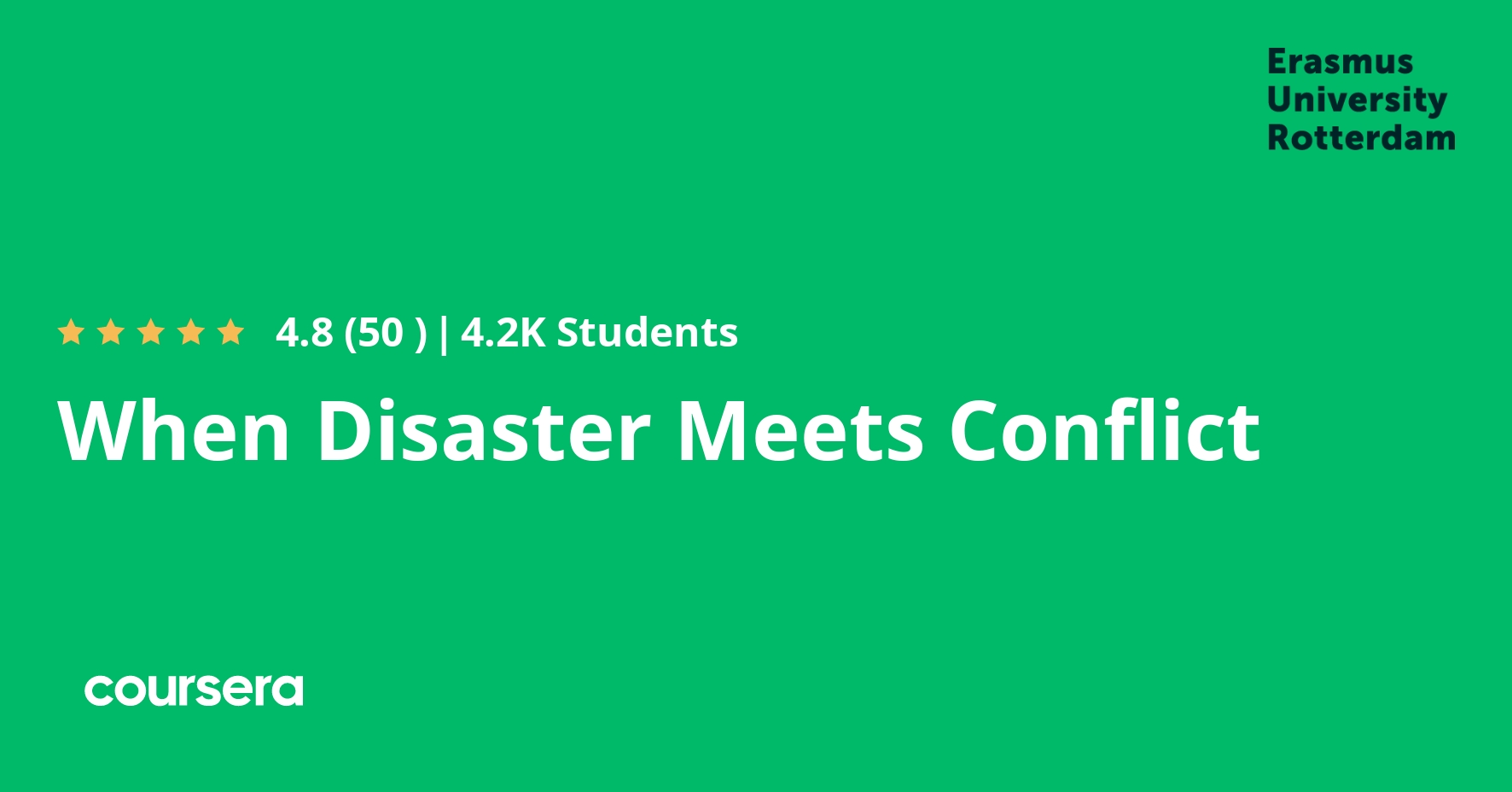Description
Disaster Risk Reduction and humanitarian aid in conflict settings
This MOOC teaches you to develop accountable, high-quality and ethical responses to disaster in conflict-affected areas. The E-course is meant primarily for practitioners, but also open to students or otherwise interested people. It stimulates participants to think about humanitarian aid, DRR and disaster response in contexts where conflict is ongoing, lingering, or has characterized the setting in recent times, as well as about the hard choices and dilemmas faced by humanitarian actors in conflict settings. Moreover, you will learn to distinguish the different challenges and effective, positive examples of aid in three types of conflict settings. Through videos, interviews, guest lectures and realistic case-studio, learning becomes both relevant and fun; everything you learn will be applicable for practice in the field.
Curious? Check out our trailer in the first module of the MOOC below.
What you will learn
Disasters, conflict and aid
In this first week, you will learn more about the research that this MOOC was based on, and about the researchers that conducted it. You will learn what the current state of our understanding is when it regards the interconnections between disaster, conflict and aid, and get to know a useful analytical tool that can help you navigate in this complex terrain.
Disaster Risk Reduction (DRR) in high-conflict scenarios
The goal of this week is to make you familiar with High-conflict scenarios (HIC). You’ll learn to understand the common characteristics of disaster in a HIC-setting, and develop a sense of common problems and lessons for disaster response and disaster risk reduction. To start off with, in the first lesson we’ll introduce a case study of a high-conflict scenario where disaster strikes: South Sudan.
DRR in Low-conflict scenarios
Welcome to Week 3. The goal of this week is to make you familiar with Low-intensity conflict scenarios, or LIC for short. You’ll learn to understand the common characteristics of disaster in a LIC-setting, and develop a sense of common problems and challenges for disaster response and disaster risk reduction. This week we’ll provide you with examples from several LIC settings, such as Myanmar, Pakistan, Ethiopia and Zimbabwe.
Disaster Response in Post-conflict scenarios
Welcome to week 4. The goal of this week is to make you familiar with Post-conflict scenarios, or PC. You’ll learn to understand the common characteristics of disaster in a LIC-setting, and develop a sense of common problems and lessons for disaster response and disaster risk reduction. To start off with, in the first lesson we’ll introduce a case study of a post-conflict scenario where disaster strikes: SIERRA LEONE.



